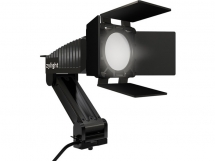| Óêðà¿íñüêà | English | |||||||||||
|
|||||||||||
| News | About company | Service-centre | OB Van/SNG Rental | NextGen Energy Solutions | Contact us |
|
|
Engineering Service, Inc.
» News News Unless you’ve had your head in the sand, you can’t help but have heard about HDR (High Dynamic Range) TV. There’s been no end of announcements from manufacturers about how they are (or will be) supporting this phenomenal new technology.
One thing we know to be constant in our industry is that there is always going to be change. We’ve moved from black and white to color, from analog to digital and from SD to HD (now moving on to UHD and up), in the constant desire to bring higher and higher fidelity images to the home. Talk of higher and higher resolutions and frame rates continue to stretch the boundaries of delivery bandwidths—with, some might say, decreasing rates of return as each of these technology advancements comes with a real price tag for the creators and distributors of media. THE PROOF IS IN THE IMAGE It’s hard to argue the value of HDR TV, though. Even the least discriminating viewer notices immediately the improvement when they see their first HDR images. Large screen or small, high frame rate or standard, the visible improvement through HDR is immediately apparent and, more importantly, significantly improves customer engagement with the program. If we are going to discuss “High Dynamic Range,” we have to also accept the term “Standard Dynamic Range.” As you might expect, these two terms differentiate between different tiers of dynamic range within the media industry. So we should start by understanding the term “Dynamic Range.” With that understanding, we can extend the discussion to cover these tiers of performance. Dynamic Range is a term engineers and physicists use to define the full range of signal that a piece of technology or system is designed to handle (preferably without distortion—dynamic range doesn’t specifically detail that the system should be linear). For example, in film, the dynamic range is the range between the lowest amount of light that a piece of film can capture (if you go any darker, you can’t reproduce the difference when you present it) to the largest amount of light that the film can tolerate before it saturates (go any brighter, and you can’t detect the increase—the film has absorbed as much light as it can). In audio, the dynamic range goes from silence to the loudest level that a piece of equipment can record, tolerate or present (play back). SYSTEM DESIGN IS CRUCIAL It’s important to note that different pieces of equipment at different stages in the media production/delivery process could, in theory, have different dynamic ranges. In that case, the true dynamic range of the system will be limited by the performance of the lowest dynamic range component. System design is therefore crucial—there’s little point in putting an HDR component in the middle of an SDR workflow. For now, just remember that in any discussion of dynamic range or HDR, it’s important to specify if you are talking about a system, or an individual component of that system. In video, it’s often convenient to discuss dynamic range in terms of contrast ratio. In fact, HDR systems can offer up to a 50x increase in contrast ratio in comparison to an SDR system. But—and here’s the really important point—SDR systems could achieve similar gross contrast ratios if the final display can be made bright enough. This is analogous to turning up the amplifier on your stereo: the sound gets louder, not better. The big difference is that an HDR system is cable of reproducing far more of the intermediate values than an SDR system can—ensuring that all of the nuances of the signal make it through to the viewer’s display. This is the most important point—HDR allows you to reproduce images that convey a much more realistic representation of the original scene. Absolute light level plays an important part in that, to be sure—specular highlights can be breathtaking—but it’s the ability to recreate all of the intermedia values that makes HDR material so compelling. « To the list of news |
|
|||||||||||||||||
 |
+38 (044) 593-18-20 +38 (073) 593-18-20 +38 (096) 532-96-82 +38 (095) 532-96-82 Service center Telegram @Engineer_Service |

|
|
|||||
 |
e-mail: engineer-service.tv 15 Vavylovykh str., Kiev, 04060, Ukraine Authorized service centre of Panasonic, Sony, JVC, Fujinon, Canon |
|||||||








